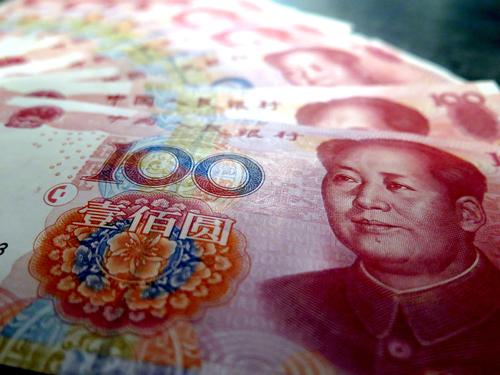This has been originally published on EBN
According to a preliminary estimate of the U.S. Department of Commerce, U.S. gross domestic product (GDP) grew at a mere 0.2% annual rate in the first quarter of 2015. However, economists now expect that growth was actually negative, thanks to a sharp rise in America’s trade deficit in March 2015, from an estimated $35 billion to an actual $51.4 billion.
This is exactly what I had feared would happen. U.S. trade deficits have been slowly eroding American industry, including semiconductors and other high-tech products, ever since 1981. America’s policy of free trade usually gets the blame for this deficit. That is why I believe that the United States should have balanced trade with its trading partners.
In a new book, End Unemployment Now: How to Eliminate Poverty, Debt and Joblessness Despite Congress, American economist Professor Ravi Batra argues that the trade deficit actually results from two forces; while the United States follows free trade, China and Japan do not. These nations constantly intervene in the market for foreign exchange and manipulate their exchange rates in order to cheapen their currencies relative to the dollar. A cheap currency means cheaper prices for its goods abroad.
Here’s the simple equation:
U.S. imports from China = China’s imports from the U.S. + China’s purchase of U.S. government bonds
If U.S. imports from China are $100 and China’s imports from U.S. are $30 but China spends $70 to buy U.S. government bonds then, of course, China’s ownership of U.S. debt will increase. The growing ownership of U.S. debt by China has caused a lot of geo-political tensions. The growing wage-productivity gap in the U.S., caused by its free trade policies, have resulted in waning manufacturing sector in the U.S.
China also has a high wage-productivity gap and the country has avoided any over-production of goods by having an exchange rate with the United States which creates an artificial demand for dollars. In this way, China has strayed from true free trade and avoided depreciation of dollar in spite of rising U.S. trade deficits. However, in this process, the country has become an increasing larger withholder of U.S. national debt.
For the U.S. to eliminate its trade deficits and for manufacturing to make a comeback to the United States, the U.S. needs to follow in China’s footsteps. It needs to manage its foreign exchange rate with the help of the Federal reserve which could offer an incentive to Chinese importers to buy more American goods.
Batra explains in his book that this can be made possible by offering a better exchange rate like 4 Yuan for 1 USD or perhaps even 3 Yuan for 1 USD. Let us take an example of an iPhone 6 manufactured in the U.S. Suppose, the cost of an iPhone 6 is approximately $500. With the current exchange rate of 6 Yuan for 1 USD, the cost of iPhone 6 to Chinese importer will be 3000 Yuan. Now, suppose the Fed offers an exchange rate for China as 4 Yuan for 1 USD instead of 6 Yuan for 1 USD. Then, the cost of iPhone 6 to Chinese importer would fall to 2000 Yuan from 3000 Yuan, a staggering 33% price reduction for the importer. If this does not work, the Fed can offer an exchange rate of 3 Yuan for 1 USD to increase US exports to China.
The Chinese importers would also be delighted and there would be a rush to take advantage of Fed’s offer. China will buy more consumer electronics from the U.S. The U.S. will no longer run trade deficits but gradually increase its exports to China. Eventually, American exports would soar to match imports with China. In turn, more manufacturing jobs could be created within the United States and trade deficits could be eliminated with existing free trade policies. Free trade policies do not let trade barriers to be imposed but allow exchange rate manipulation. Batra argues that, since China and Japan have pursued such policies successfully, the U.S. should pursue similar policies to reduce its domestic poverty, debt, and joblessness.
These trade policies have the potential to rekindle America’s waning manufacturing base and create millions of high paying manufacturing jobs within the United States. The trade deficits would be eliminated without geo-political tensions since the next Cold war has already started this time between the U.S. and China rather than Russia.
There would be no import duty placed on Chinese and Japanese electronics entering United States. However, with the growing consumer purchasing power in United States, the quality of Chinese goods entering the U.S. would have to automatically increase. The problem of counterfeit electronics would be eliminated since domestic consumers would have sufficient buying power to demand good quality electronics rather than cheap copies. China’s government should not resist this policy either, because Chinese exports to the United States would not be hurt, as a U.S. importer would still buy 6 Yuan for 1 USD from the People’s Bank of China, and obtain Chinese goods at the same cost as before.
As long as all countries play by the rules, the process of offshoring manufacturing jobs just because of low costs in third world countries will also come to an end. These policies could be adopted by countries like India which run a trade deficit with China and end up with a huge unemployment issue.
In addition, China has decided to compete with India’s “Make in India” initiative to ensure that China remains a global manufacturing hub. Federal action would then create a free-market outcome, even though in reality there still would be no actual free trade, which would make it mandatory for countries like China and Japan to abstain from intervention in markets.
Once a balanced trade has been created between nations of the world, the economies can transition to mass capitalism based free market economic reforms to further boost domestic purchasing power and hence increase domestic prosperity. The United States came out to be victorious in last Cold War as the Soviet economy failed due to defects in Communism. However, without reforms, the U.S. will surely lose this ongoing Cold War with China.


Recent Comments